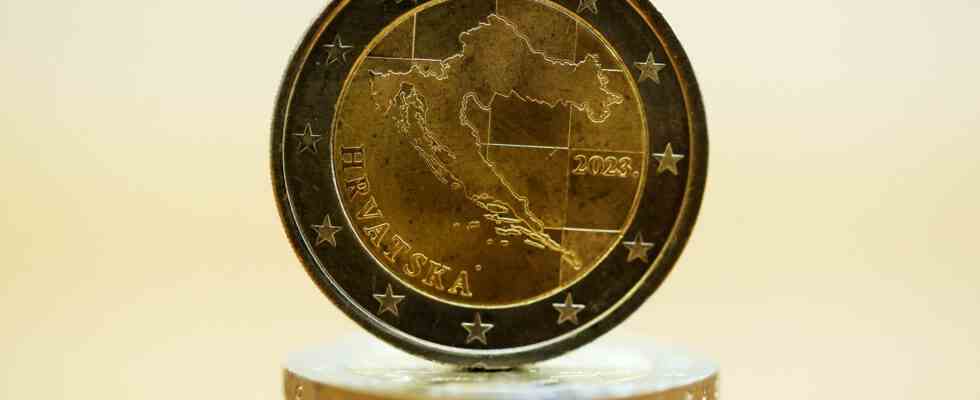Status: 12/27/2022 10:28 am
On January 1st, the EU country Croatia introduces the euro instead of the national currency kuna. This is one of the reasons why the European Central Bank approved the production of a large number of new euro coins for the common currency area.
Croatia’s entry into the euro on January 1, 2023 will lead to a significant increase in coin production in the common currency area. The European Central Bank (ECB) has authorized the 19 euro countries and Croatia to produce coins with a total volume of almost 2.6 billion euros. That is significantly more than a year earlier.
For 2022, the central bank had promised the 19 countries in the currency area the issue of new euro coins in the amount of around 1.8 billion euros, in 2021 it was just under two billion euros, in 2020 a good 2.1 billion euros.
Germany in first place in coin production
Of the coin production planned for 2023, a volume of 2100.94 million euros is intended for daily use. There are also collector coins worth 496.18 million euros.
Germany wants to produce the most coins again. The volume in Europe’s largest economy amounts to 633 million euros, of which 206 million euros are accounted for by collector coins.
With a total volume of 343 million euros, Spain has the second highest value of new coins, France is third with 339 million euros of the euro countries.
Transition period for the national currency
According to this, Croatia plans to issue euro coins totaling 316.77 million euros, mainly for everyday use. The ECB sets an annual cap on the total volume of coin issuance based on the needs reported by euro area countries. Within this framework, the federal states may then have coins minted.
Croatia joined the EU in 2013 and is now allowed to adopt the euro in 2023. For the introduction of the European common currency, it had to meet a number of conditions. The exchange rate is fixed: one euro equals 7.5345 kuna. There is a transitional period until January 14, during which payments can still be made in both currencies. Kuna from the last holiday can be exchanged at banks in Croatia free of charge until the end of 2023 – up to 100 coins and notes per transaction.

